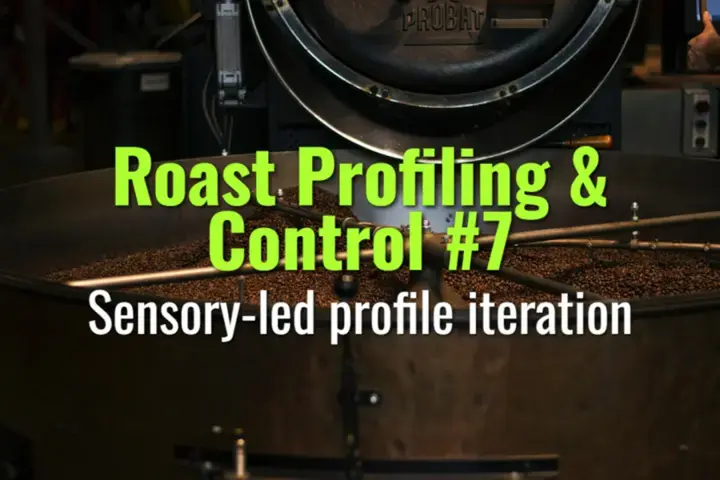Sensory-led profile iteration
This topic covers how to use sensory evaluation to refine and optimize roast profiles, linking taste outcomes directly to roasting parameters.
- Coffee Basics Nerds
- 1 min read

Key Concepts
-
Role of Sensory Feedback:
-
Tasting the coffee (cupping) at various roast levels provides critical insight into flavor, body, acidity, and aroma.
-
Identifies specific notes that are under- or overdeveloped in the current roast profile.
-
Iterative Profiling Process:
-
Start with a baseline profile for a given lot.
-
Conduct a cupping session to evaluate flavor clarity, sweetness, acidity, and body.
-
Record tasting notes and identify deviations from desired flavor targets.
-
Parameter Adjustments:
-
Modify charge temperature, RoR curves, drum speed, or airflow to correct specific flavor imbalances.
-
Adjust development time to influence sweetness, acidity, or roast character.
-
Small incremental changes are preferred to maintain repeatability.
-
Documentation:
-
Keep detailed logs linking each profile adjustment to sensory outcomes.
-
Compare results across multiple iterations to determine the optimal profile.
-
Integration with Data:
-
Combine sensory feedback with objective data (Agtron color, RoR, temperature curves) for more precise control.
-
Use cupping results to confirm consistency across batches.
-
Team Collaboration:
-
Involve multiple cuppers to reduce bias and improve accuracy.
-
Encourage structured discussion on sensory observations.
Summary
Sensory-led profile iteration bridges the gap between technical roasting parameters and the coffee’s flavor outcome. By systematically tasting, adjusting, and documenting, roasters can optimize profiles to meet desired sensory targets while maintaining consistency and repeatability.
You might also like:
- Tags:
- Key Concepts
- Flavor Clarity
- Acidity Body
- Sweetness Acidity
- Coffee Flavor
- Drum Speed
- Charge Temperature
- Roast Levels
- Sensory Outcomes
- Desired Flavor
- Roast Profile
- Clarity Sweetness
- Precise Control
- Ror Curves
- Cupping Results
- Sensory Feedback
- Speed Airflow
- Tasting Notes
- Roasting Parameters
- Body Acidity
- Flavor Body